Creating the Uswitch Quick Checker
The energy crisis forced energy suppliers to pull their fixed deals from the market, preventing Uswitch from switching its users' energy plans for the first time in 20 years. Users felt very unsettled due to the rise in energy prices and not knowing what to do, while the business needed to remain relevant. I worked with the lead designer to design the Uswitch Quick Checker, which provided users with the information they were looking for while finding a new way for Uswitch to remain front of mind for users when energy switching returned.
Role: UX, UI, User research
Activities
- Planned and conducted user research
- Planned and ran ideation workshop
- Defined product direction with the product team
- Created prototypes and ran testing
Finalized UI design
Outcome
- 5% email capture
- 200,000 monthly returning users
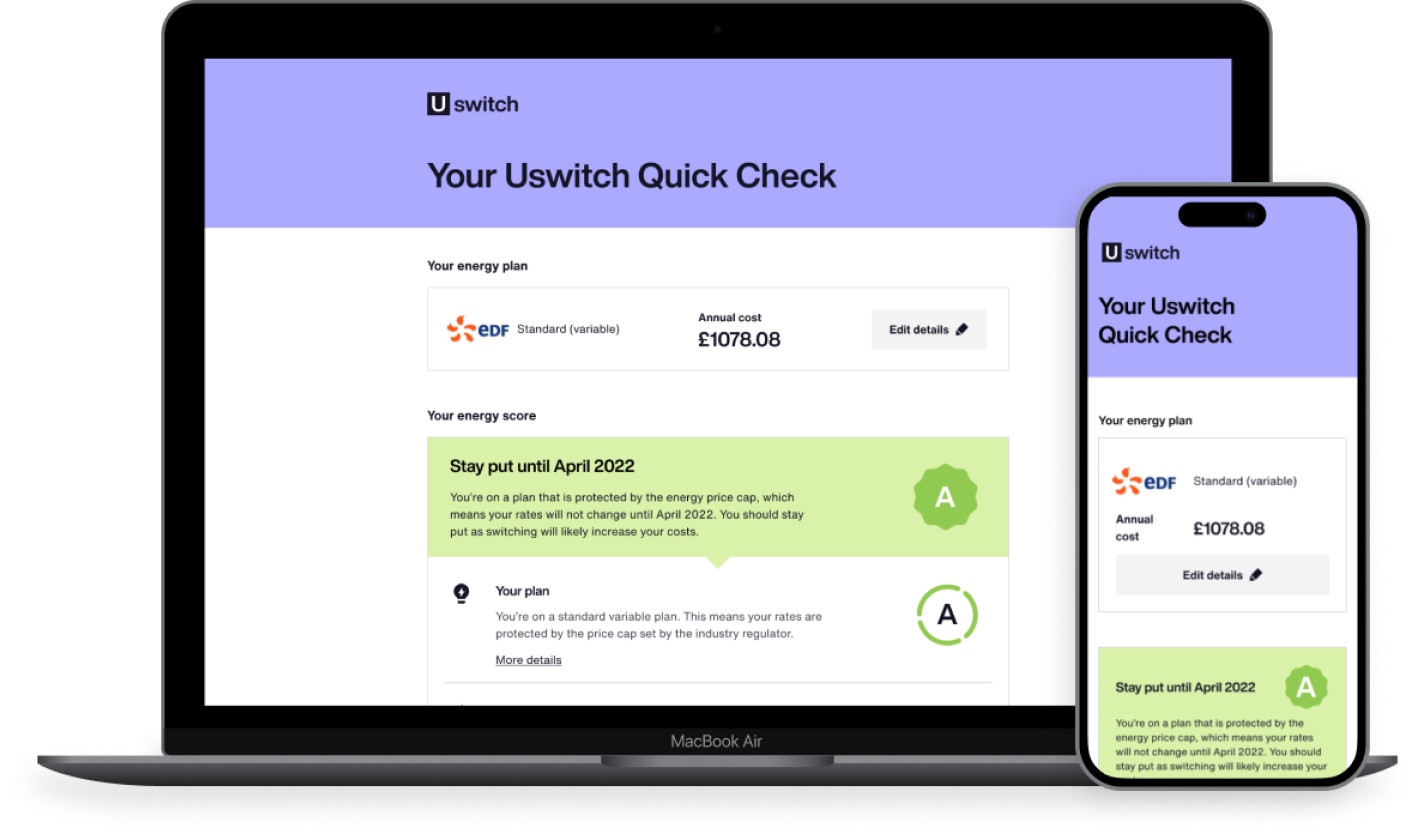
User problem
Users were no longer able to switch energy providers and were unsure what they should do.
Business problem
The business was no longer able to switch users' energy plans and needed to find a way to keep users engaged until energy switching returned.
Researching how our switching product met user’s needs
With a big shift in the energy market, the lead designer and I decided we needed to run some user testing to validate whether our product still met our users’ needs. I led the planning, running, and analysis, allowing us to determine what the next steps should be.
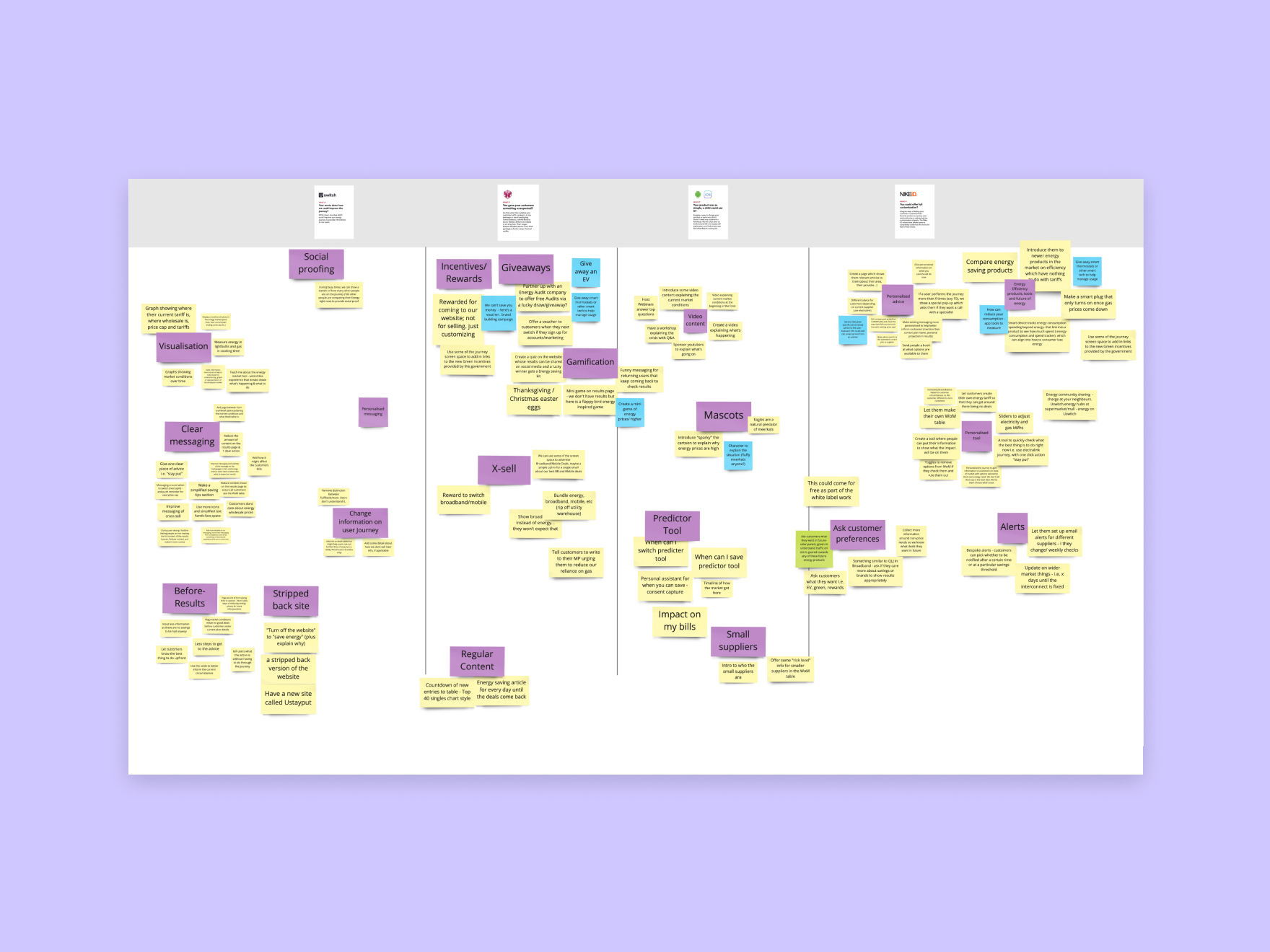
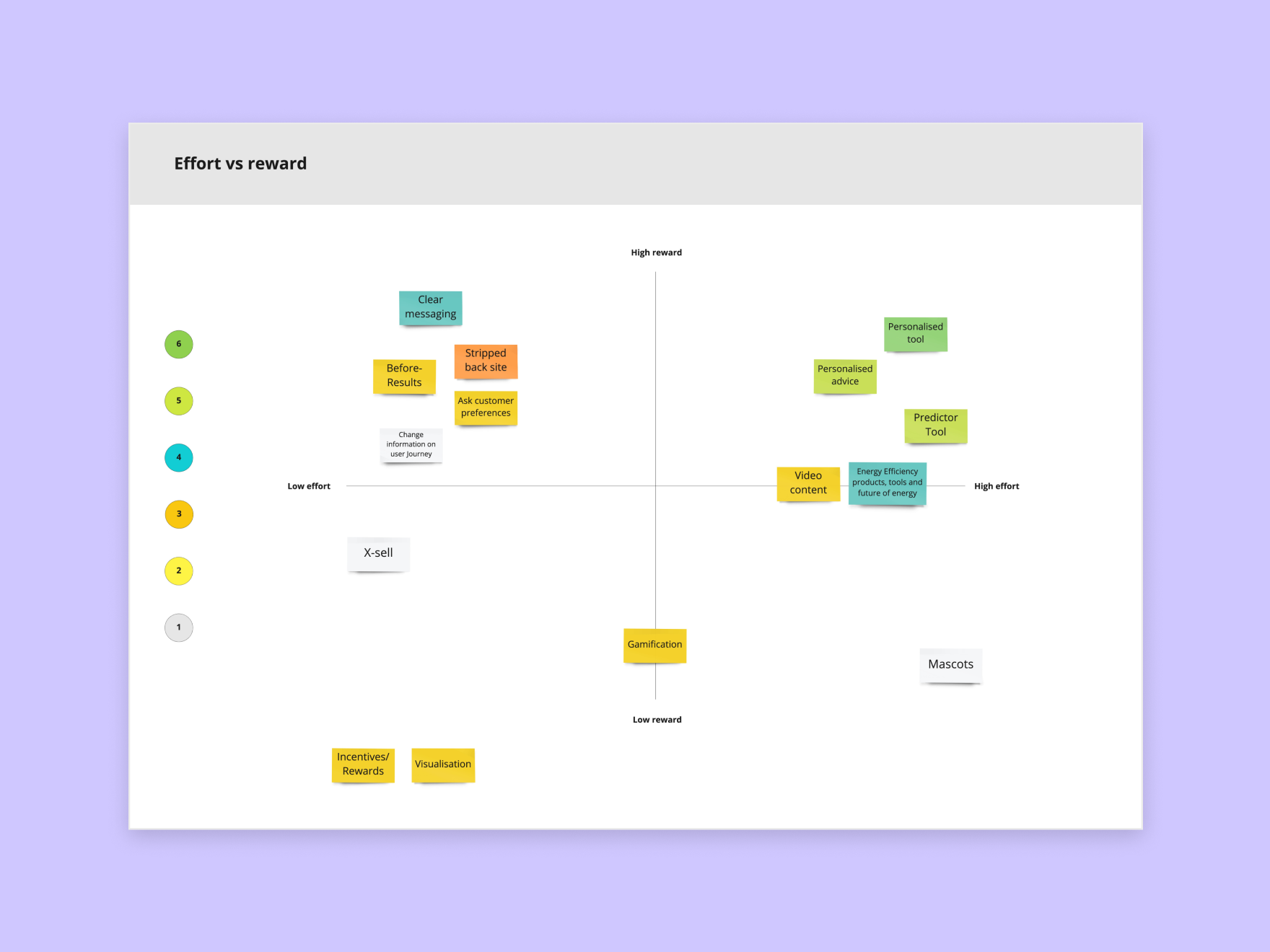
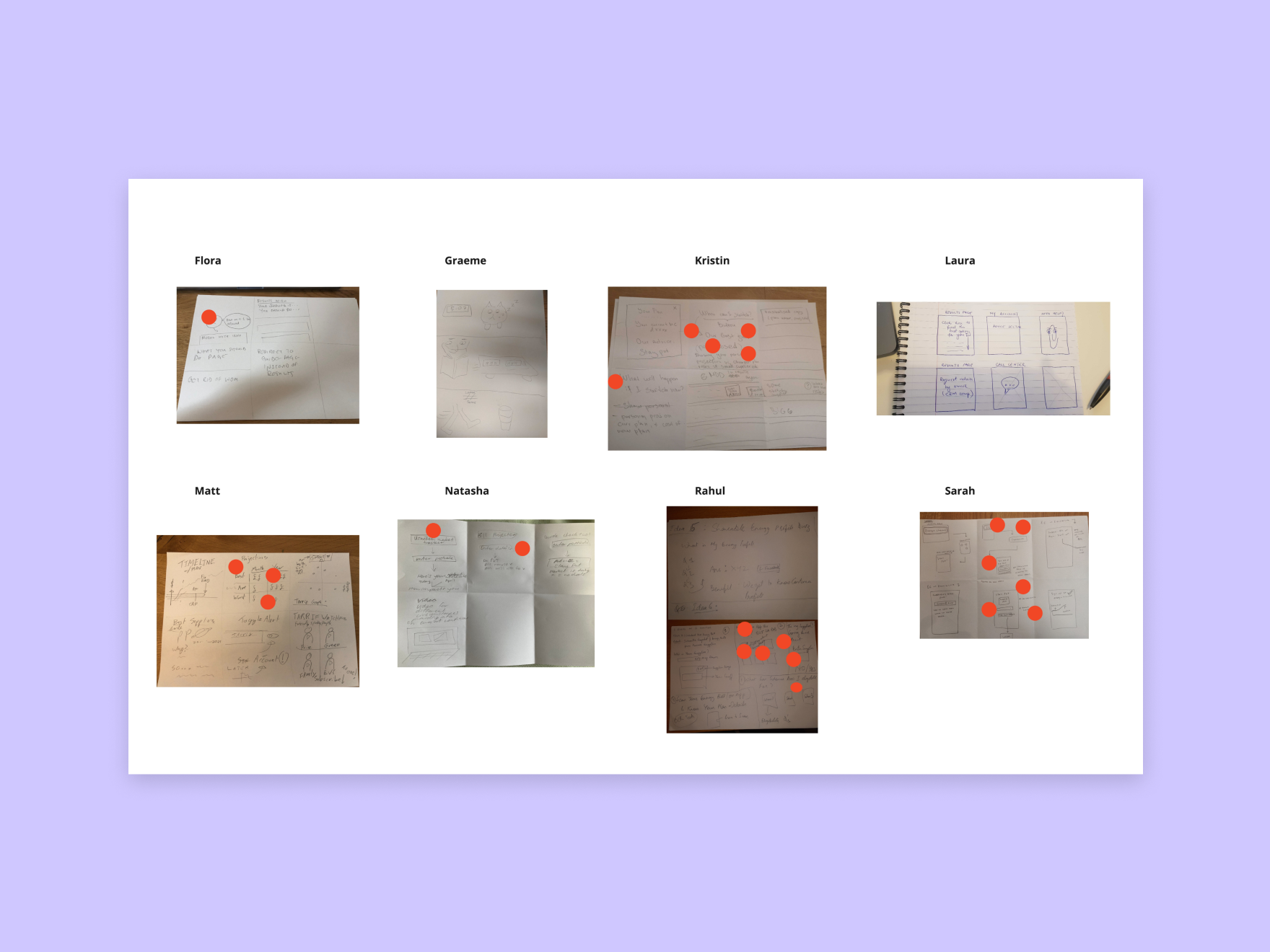
The research revealed three key points:
- Our product was no longer useful to our users
- Users were unsure what to do due to the lack of available energy plans
- Users felt anxious because energy bills were rising and some energy suppliers were going into administration
Main points
- Research validated that our product was no longer matching our users’ needs
- Our users felt unsettled and wanted information on their situation to help them decide what to do
- A change in product direction was needed
Discovery: defining how to help our users
I planned and ran an ideation workshop with the product team (engineers, product, data analysts) based on findings from the user testing. We used ideation cards to come up with possible solutions.
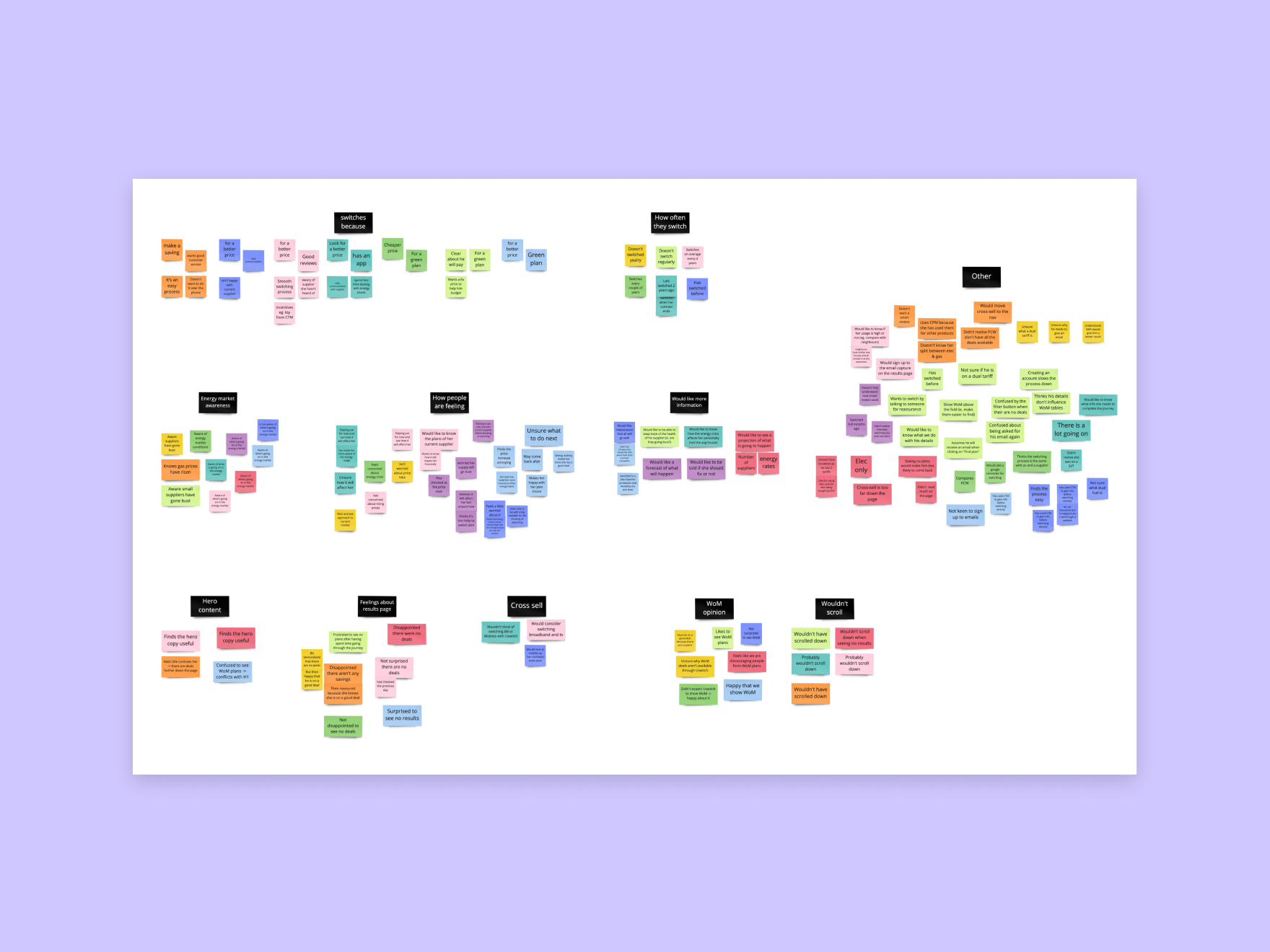
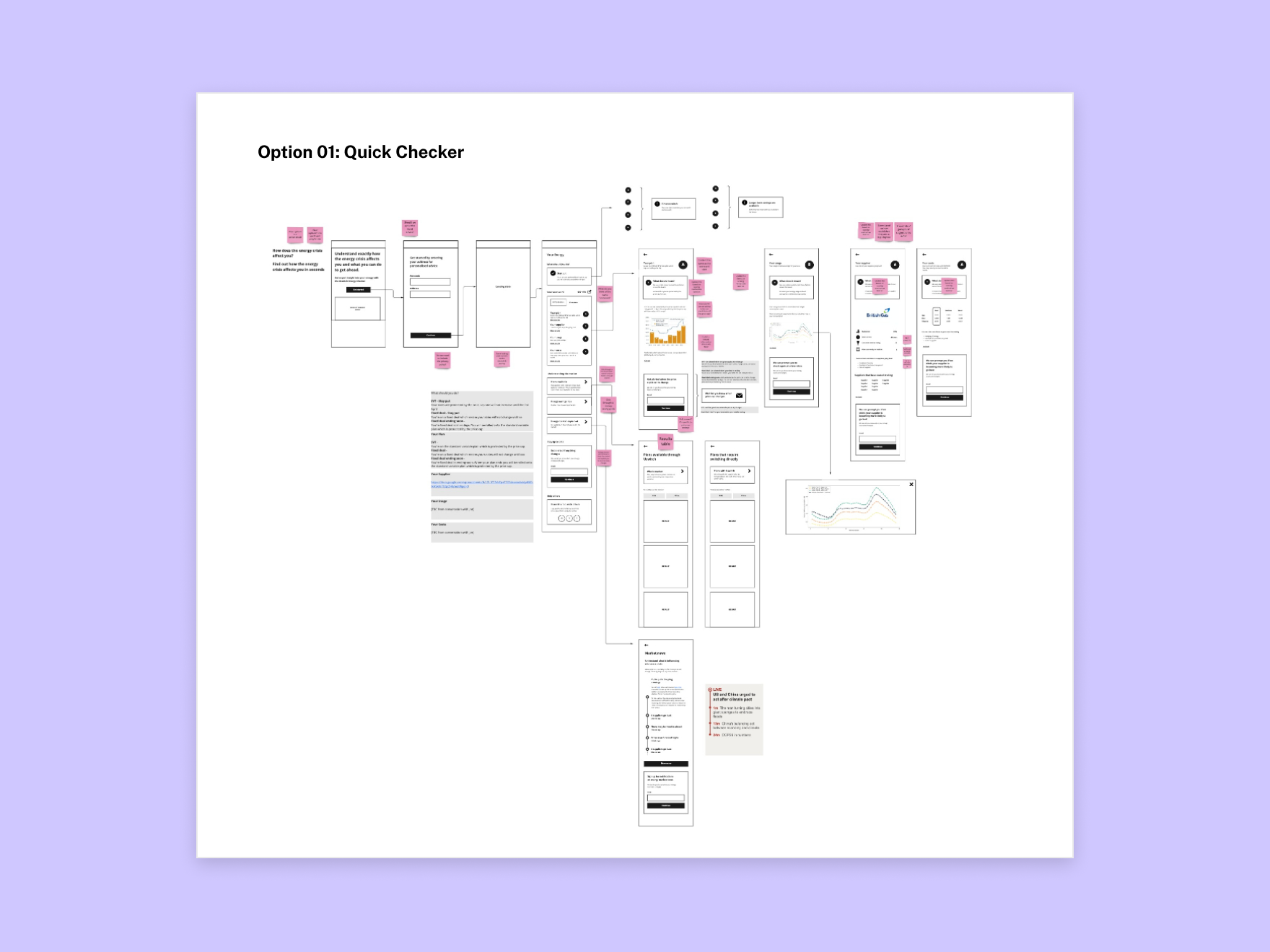
Once grouped into themes, the lead designer and I assessed which ones to take forward based on:
- User value
- Business value
- Data we already had
- Data we would need to collect
- User and business risks associated with each solution
I presented our recommendation to the product team, agreeing to move forward with the Quick Checker. This solution gave users the information they needed to navigate the energy crisis, kept Uswitch relevant to users, and encouraged them to switch with Uswitch once energy plans returned to the market.
Main points
- Ran an ideation session with the product team
- Refined options and gained agreement on which solution to take forward
- The solution benefited both users (providing relevant information) and the business (maintaining relevance and encouraging users to switch with Uswitch)
User testing the Quick Checker
I ran a moderated user test to gauge whether our idea would be useful to users and to avoid engineers building a product that wouldn’t be released. I reused the same metrics as the initial testing so we could evaluate whether it better matched our users’ needs.
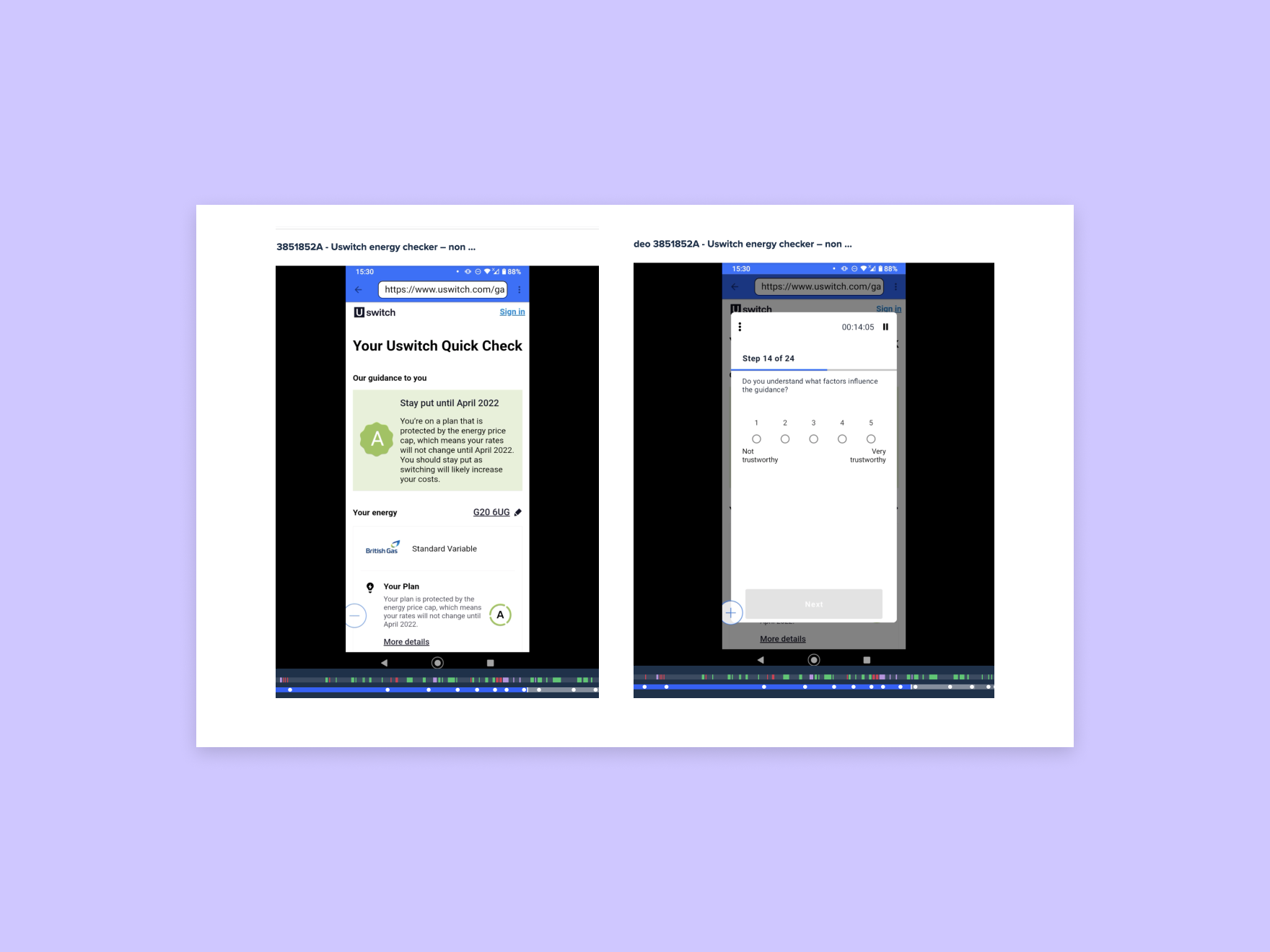
User feedback confirmed the Quick Checker’s value, showing improvements in both usefulness and satisfaction. This product proved Uswitch could offer more value to users beyond switching. The key features of the Quick Checker are:
- A personalised grade, helping users assess whether they were in a good situation
- Insight into their grade (their plan, their supplier, their energy usage, and their energy cost)
- Notifications on changes to their grade and energy plans they could switch to
- An overview of plans available in the market, whether through Uswitch or not
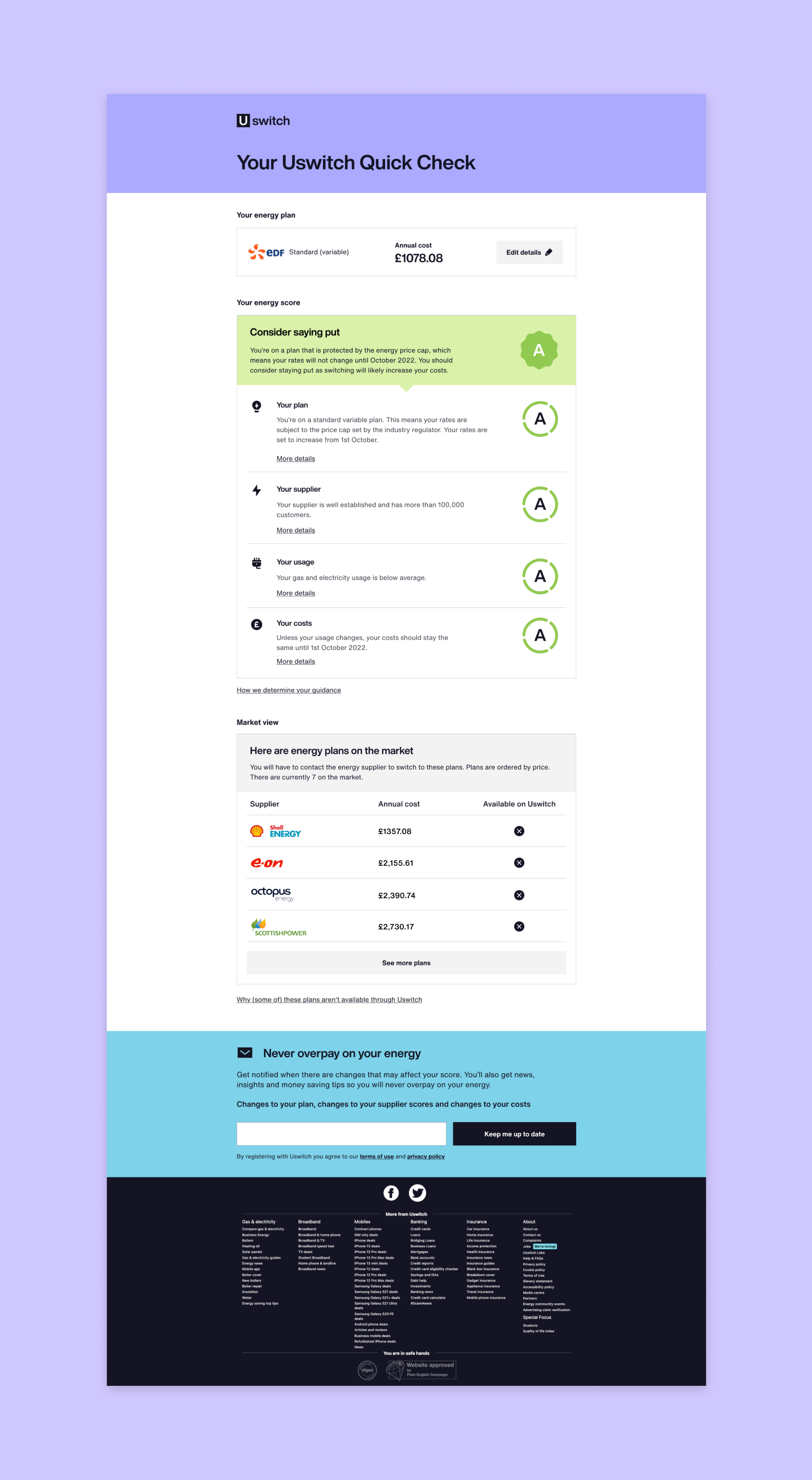
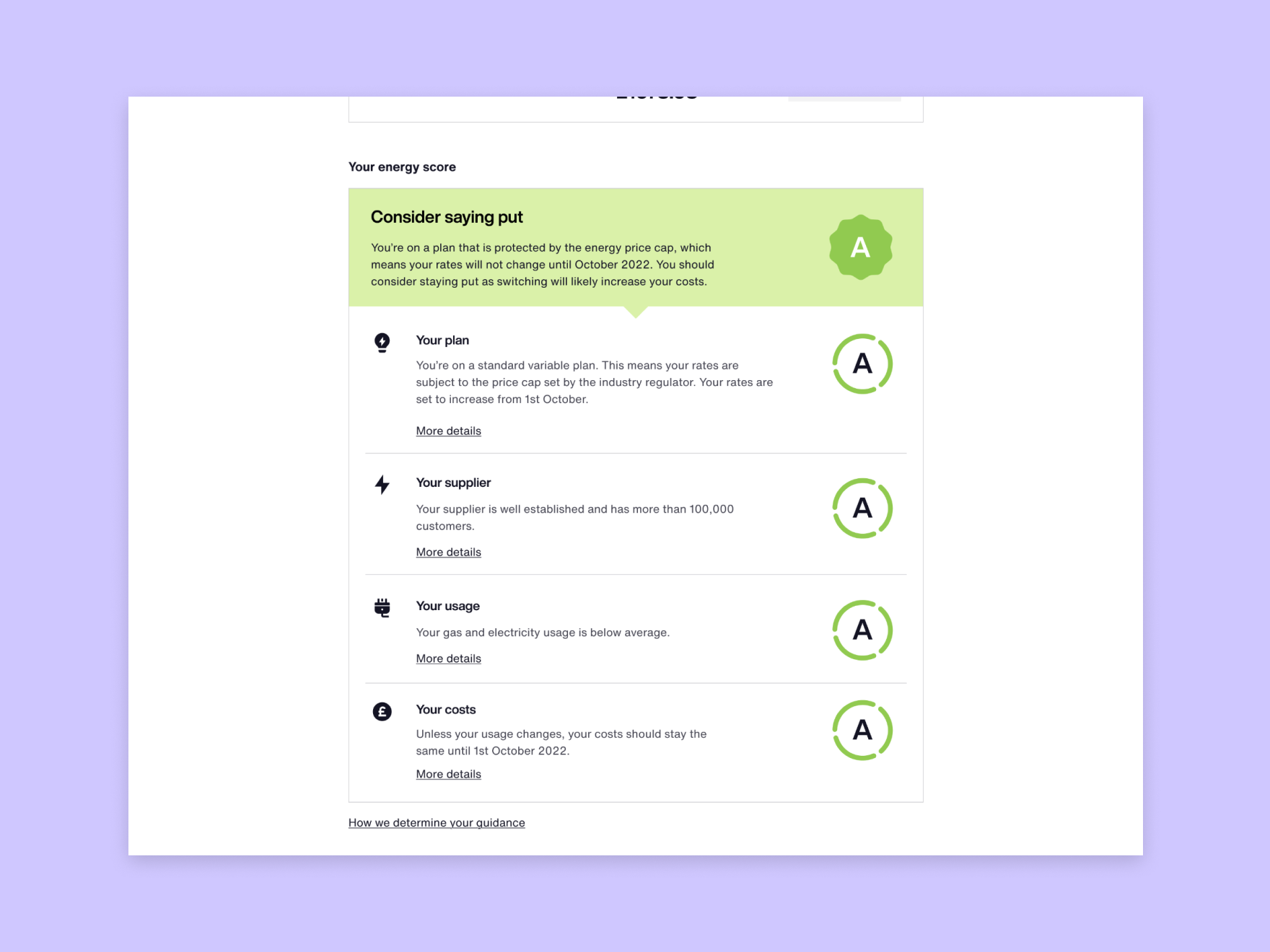
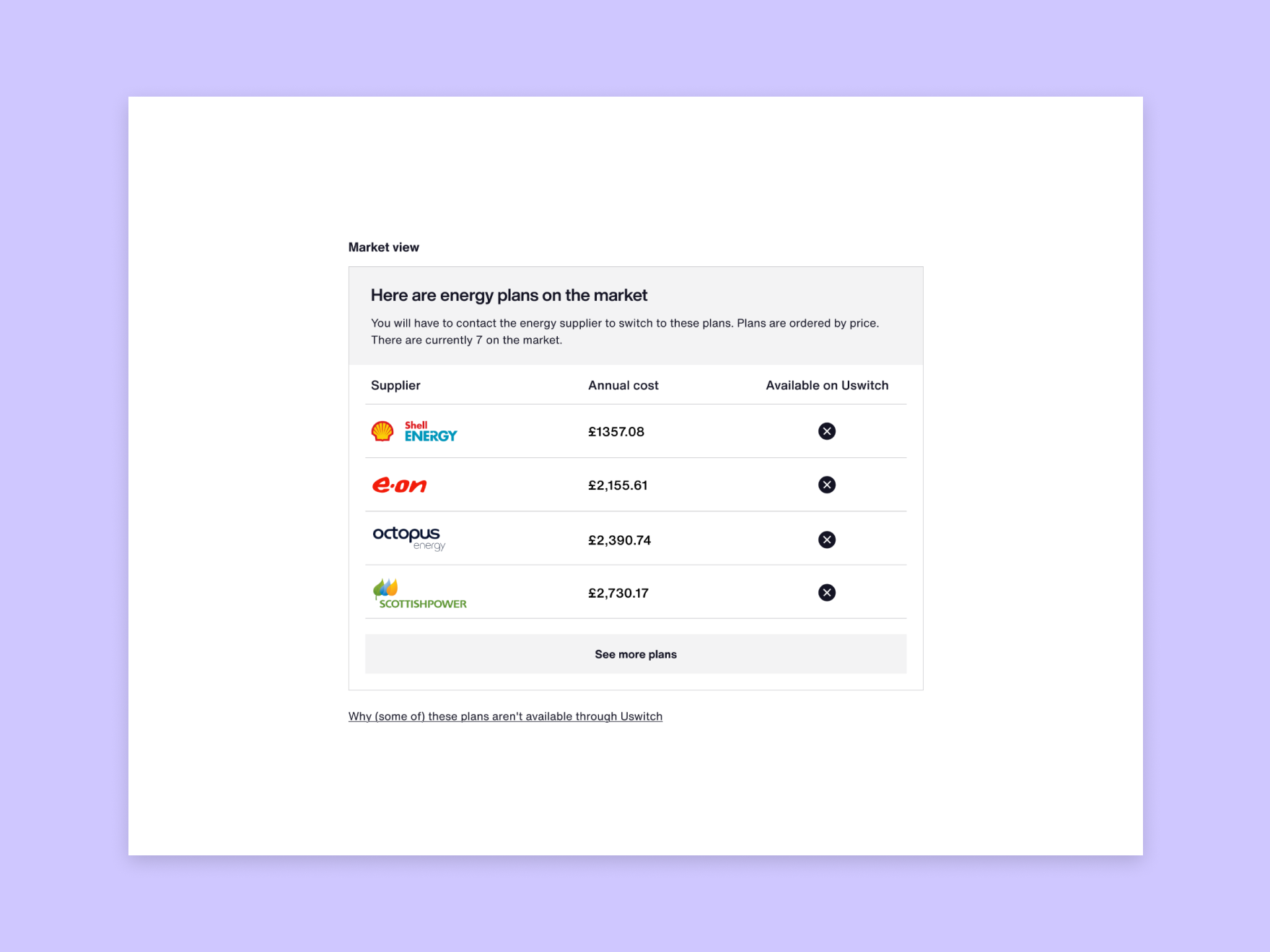

We launched the Quick Checker as an A/B test, alongside an onsite survey to measure its effectiveness. Results showed a significant improvement in user sentiment—rising from 1.9/5 on the empty switching page to 3.5/5 with the Quick Checker.
With this validation, we rolled it out to 100% of traffic. Over the next three months, we saw 200,000 monthly returning users and a 5% sign-up rate for grade and plan updates.
Main points
- Moderated testing further confirmed this was the right direction
- The Quick Checker’s information helped ease users’ worries
- It provided value to the business by creating a contactable base (5% sign-up rate) for when energy switching would return and kept traffic coming to the site (200,000 monthly returning users)
Thoughts on the project
A Crisis Can Lead to New Opportunities
A crisis like this was a challenging task to tackle. We started not knowing what to do, but with user research, we were able to find a solution. I got a lot of satisfaction from finding a new direction the business could work towards, and it has now been included in the app.
Further Testing Into Grade Communication
One key learning from user testing was that many users struggled to understand their energy grade. Some users were unsure if a "B" rating was positive or negative, which impacted their confidence in decision-making. More iterative testing on the grading system could have improved user comprehension.
Balancing Speed and Execution
Delivering a fully functional product in just eight weeks was a major challenge, but it was also an opportunity to build something from the ground up. Working within tight constraints, we successfully aligned user needs with business objectives, ensuring that Uswitch remained relevant despite the energy crisis.
Long-Term Sustainability
In hindsight, I would have pushed for more strategic planning on how the guidance system would evolve over time. Now that the Quick Checker has been live for a year, every new energy market announcement requires manual updates to the personalized guidance. A simpler solution could have reduced this ongoing effort, allowing the team to focus on other opportunities.
Thanks for having a look.